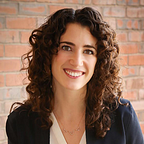Disrupting Eldercare
PART I: Eldercare’s Underserved Stakeholders
Based on discussions with 30+ founders, operators, advisors and investors, this two-part series takes a deep dive into eldercare — a critical yet underserved $350B market that is ripe for disruption. Part I below examines the key stakeholders who comprise the fragmented eldercare ecosystem.
My grandmother, Mimi, is one of the most resilient people I know. She is 91 and suffers from the inevitable consequences of “getting old” — multiple physical ailments, significantly reduced vision, and a reliance on a wheelchair to get around. Yet she maintains a cheery outlook and has promised us she’s making it to 100. Fortunately, she is fully present mentally — yet in some ways this awareness makes her increasingly limited use of and control over her body even more difficult.
Mimi lives in an assisted living facility and has home health aides with her throughout her waking hours, 12 hours a day, 7 days a week. Daily activities that used to be routine — like getting dressed or going to a doctor’s appointment — are now an ordeal. She brightens during visits and calls from family members scattered around the country. But beyond these calls, and occasionally listening to a movie or the news, she has limited social or intellectual engagement.
Over the last 10 years, it’s been difficult watching Mimi transform from the sprightly, curious, world-traveler grandma with whom I grew up to the armchair-ridden woman she now is. It’s been particularly difficult for my mother to weather the logistical, financial and emotional challenges that accompany caring for an aging parent.
Our family is not alone — 30% of adult Americans act as a part-time or full-time caregiver for an older family member.
Our challenging experience witnessing Mimi age has motivated me to examine the landscape of companies serving the eldercare market. Can technology drive better care and quality of life outcomes?
And what of the huge population of baby boomers who, like my mother, are in the process of caring for their aging parents? They don’t want to put that physical, emotional, and financial burden on their own children. How do we help them “get ready for getting older?”
Clearly, there are a number of stakeholders who are involved in and affected by loved ones “getting older.”
Below, I’ve outlined “personas” for key stakeholders — audiences whom I believe are underserved by offerings from companies currently operating in the eldercare market.
In exploring these personas, I wanted to identify specific areas where technology could improve their lives and also gauge their likelihood to pay for better solutions.
On an individual level, there is a real need for new technologies and services to help address the various pain points of these personas. So why haven’t they emerged to date?
In Part II of this piece I’ll explore the size of the large and growing eldercare market, consumers’ willingness — and ability — to pay, and areas of opportunity for new companies to emerge.
*******************************************************************
For more on this topic, see a conversation I recently had with Business Insider about the challenges of the eldercare market.
